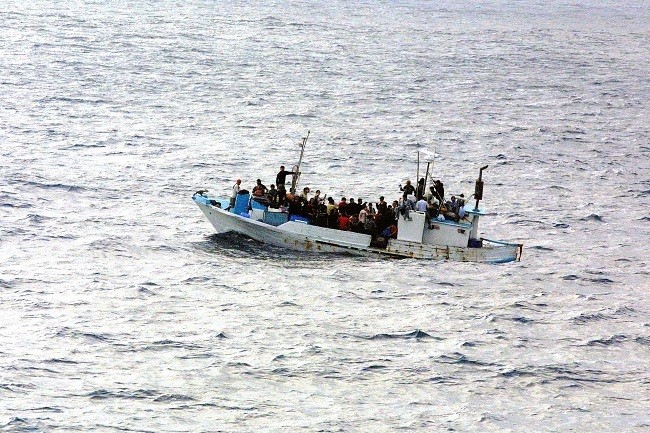Migration is the geographic displacement made by a person or group of people away from their place of origin in order to settle in a new destination, either temporarily or permanently.
There are different types of migration depending on factors such as the length of stay at the destination, the legal status of the migrant, his or her age, his or her intention to leave his or her territory, etc. Each of these types is described below:
According to destination
Internal or domestic migration
These are movements that take place within the national territory. This type of migration may be driven by economic reasons (seeking better sources of employment in another town or city) or social reasons (fleeing insecurity and finding a quieter destination). For example, migrating from Mexico City to San Miguel de Allende.
External or international migration
When the displacement is outside the migrant’s country. In these cases, there is usually a search for a better quality of life in several aspects (better income and quality of life) that is usually diminished in the country of origin, either for political, economic or social reasons. For example, a Mexican leaves his country for Canada.
According to their duration
Temporary migration
When a migrant settles in his or her place of destination only for a time, and then moves to a different place or returns to his or her place of origin. Lack of adaptation or finding a destination with better opportunities are usually the main reasons for this type of migration. For example, migrating to Argentina for four years and then moving to Spain.
Permanent migration
This is when the migrant settles in a new place permanently. In these cases, the migrant has found the economic, professional or personal stability he/she was looking for, or ultimately has managed to adapt and can deal with the challenges imposed by migration. For example, a Venezuelan who arrives in Mexico and decides to stay and live there.
Depending on their character

Voluntary migration
It is when the migrant decides to move of his own free will. It is what we do when we want to migrate and we plan to make the trip. As it is our own decision, we can manage the departure from the territory according to our needs. For example, we decide to migrate to Europe in a period of one year and we use this time to save, choose the country and city, obtain the corresponding documents, etc.
Forced migration
Occurs when the migrant must leave their territory due to external situations, even if they do not want to do so. For example, in wars, many people must leave in a hurried and unplanned manner, even if they want to stay in their homes, they cannot do so because their lives would be in danger. Other examples would be natural disasters, which force people to leave their homes because they are no longer habitable.
Depending on the legal status of the migrant
Legal or regular migration
This occurs when the migrant complies with all legal requirements to enter a new country or territory, which allows not only entry, but also subsequent academic or labor insertion and usually ensures a permanent stay. For example, having a valid passport or visa if applicable.
Illegal or irregular migration
In this case, the migrant does not have the necessary documents to be in the place of destination legally, but still manages to enter and remain in the territory. This makes him/her a target of the migration authorities, and also prevents him/her from having access to basic services, employment or education. An example is the people who manage to enter the United States without documentation because they managed to circumvent the controls at the Mexican border.
According to their origin and destination
Rural-urban migration
It is the movement from the countryside or rural centers to the city. Usually, the search for better paid jobs is one of the main motivations, but it can also be for academic reasons. For example, migrating from a hamlet in the Venezuelan plains to Caracas, the country’s capital, to study at university.
Urban-rural migration
The migrant moves from a city to the countryside. It may be for work reasons, for economic reasons (prices in the interior of the country are usually more affordable than in the capital) or social reasons (search for tranquility, greater contact with nature, etc.) For example, someone from Bogotá goes to live in Guanía, an area that has no land routes and can only be reached by river or air.
Urban-urban migration
These are movements from one city to another, either within or outside the territory. This type of migration is often linked to employment or academic reasons. For this same reason, they are often temporary movements. For example, migrating from Buenos Aires to the city of Córdoba to work for two years on a work project.
Rural-rural migration
These are movements between non-urbanized areas. On many occasions, this type of migration is linked to the existence of temporary work sources, so that the migrant changes destination when the work ends, such as farm workers who move from one area to another according to the harvest season.
According to the age of the migrant population

Adult migration
These are people of economically productive age. In a family group, they are the ones who usually travel first, since they assume the responsibility of ensuring basic needs (source of income, house) so that the rest of the members can arrive. An example is a mother who leaves her country to seek better living conditions for her children.
Child migration
This is the child population that migrates with their relatives or adult caregivers, such as children who leave with their parents.
Elderly migration
This is the population over 65 years of age. Usually, they are people who migrate to reunite with children or grandchildren who migrated first, or because there is an external situation that forces them to move, such as a natural catastrophe, a political conflict, etc.
Causes of migration
Migration can be driven by political, economic, war or ecological causes. On many occasions, more than one factor may be involved.
- PoliciesPolitical policies: coups d’état, instability in the alternation of power, persecution of political dissidents, etc.
- Economichyperinflation, shortages of basic commodities, exchange controls, high levels of unemployment.
- War: wars between countries, conflicts between internal guerrillas, civil wars, etc.
- Ecologicaldesertification, extreme temperatures, disappearance of water or food sources, among others.
See also Causes and consequences of migration
Consequences of migration

The consequences of migration affect both the place of origin and the place of destination. Mass migration, above all, generates new economic, political, social and cultural dynamics for both parties.
- Economic: increase of the labor force in the receiving country and decrease of the labor force in the country of origin.
- Policieschanges in migration policies, either to make entry and stay requirements more flexible or stricter.
- Social: redistribution of the population, increased demand for public services in the host country.
- CulturalCultural exchange expressed in language, music, gastronomy. New processes of miscegenation.
See also:




